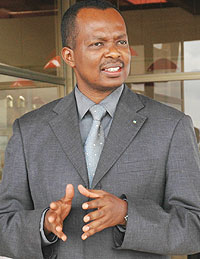KIGALI - Infrastructure Minister, Vincent Karega, has said that if everything goes as planned, the joint East African Community (EAC) railway system should be complete by 2014. He revealed in an interview yesterday that the project had moved a step ahead after the completion of studies on the Dar es Salaam (Tanzania) – Musongati (Burundi) - Kigali (Rwanda) routes.


KIGALI - Infrastructure Minister, Vincent Karega, has said that if everything goes as planned, the joint East African Community (EAC) railway system should be complete by 2014.
He revealed in an interview yesterday that the project had moved a step ahead after the completion of studies on the Dar es Salaam (Tanzania) – Musongati (Burundi) - Kigali (Rwanda) routes.
"Soon a joint team for the project coordination will be put up so that the business model for implementation and resource mobilization takes place in 2010. Construction shall start in 2011 and expected to be completed in 2014,” Karega said.
The line from Dar-el-salaam to Uganda will pass through Tanga, Musoma, Arusha in Tanzania to PortBell and then to Jinja in Uganda.
In April last year, EAC Infrastructure Ministers recommended to the Canadian firm, CPCS Transcom International Ltd, which is carrying out the Master Plan study, to include Sudan and the Democratic Republic of Congo (DRC).
"All countries involved will contribute resources, share risks and benefits,” the minister added.
There are reports that each partner state will contribute $1.5 million for the feasibility study and $10 million for the eventual construction of the railway network.
Karega said that the railway system will bring a lot of benefits to Rwandans due to the high cost of transport.
Preparation of the East African Railways Master Plan is a directive of the Summit of the EAC Heads of State of April 2004, upon realization that the region would remain uncompetitive as long as transport costs remain high.
In particular, the Heads of State were concerned with the declining role of the railway system in transporting cargo to and from the ports and the resultant rapid deterioration of the region’s road network.
If put in place, the railway network will go down in history as the first joint infrastructural project initiated by region years after the colonial regime constructed the currently used Kenya-Uganda railway line.
The much anticipated project will increase the trade competitiveness of the East African region which has a population of close to 130 million people and a combined GDP of $60 billion.
Ends


